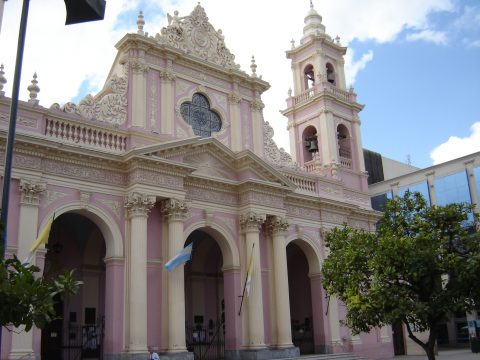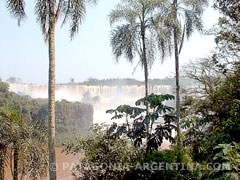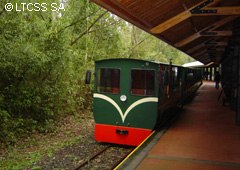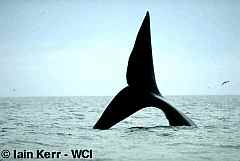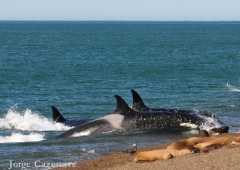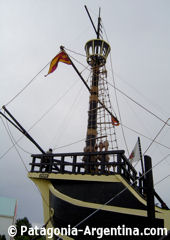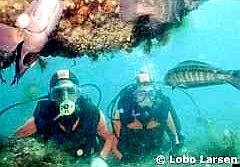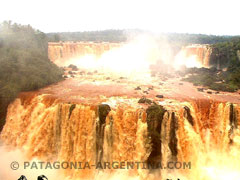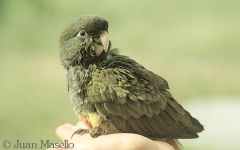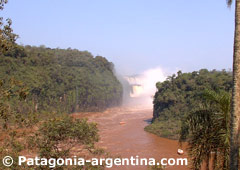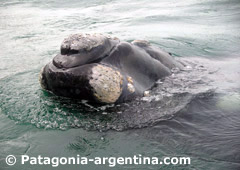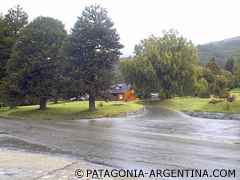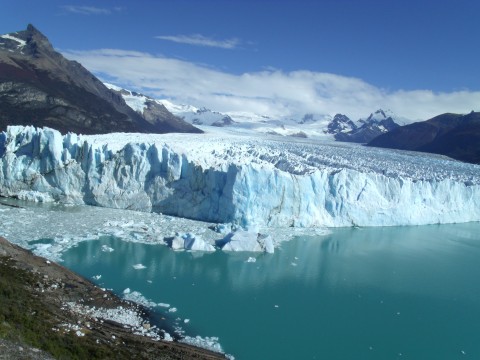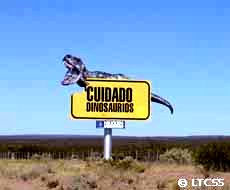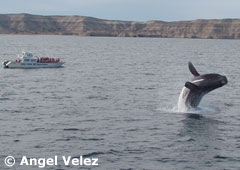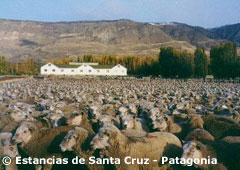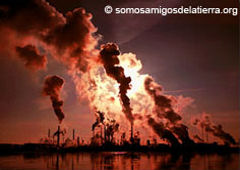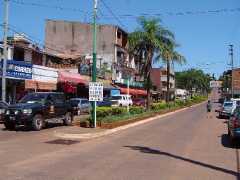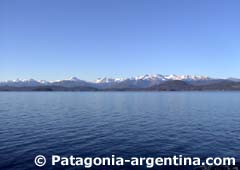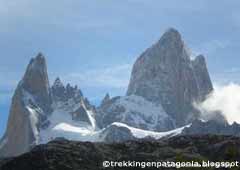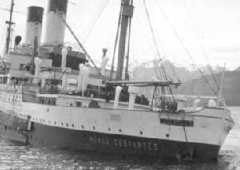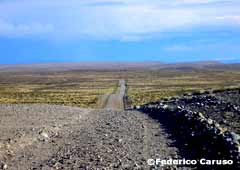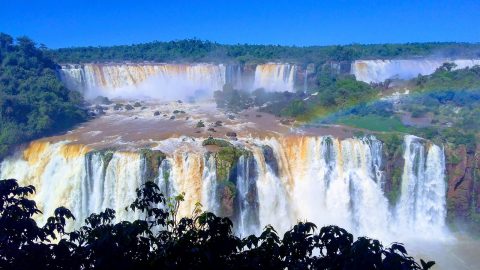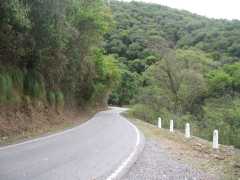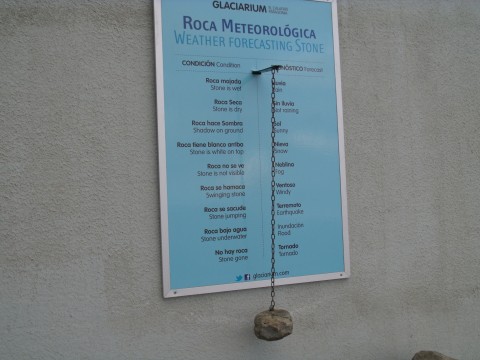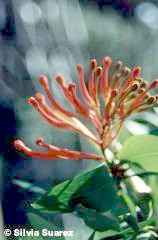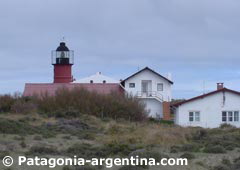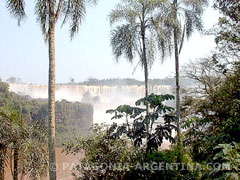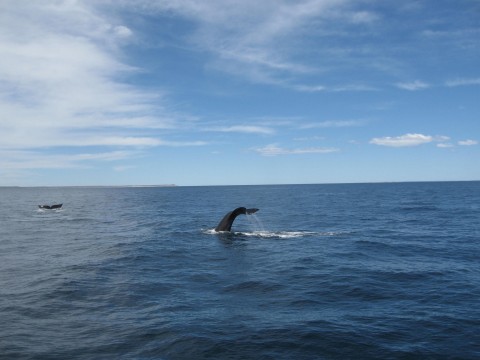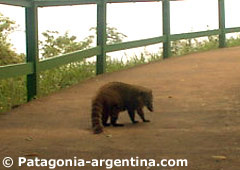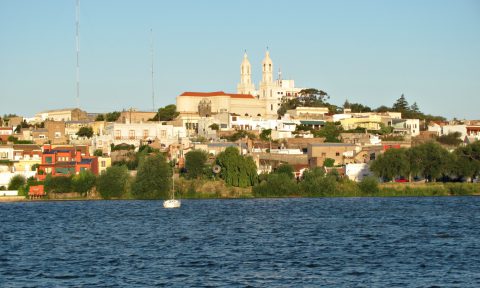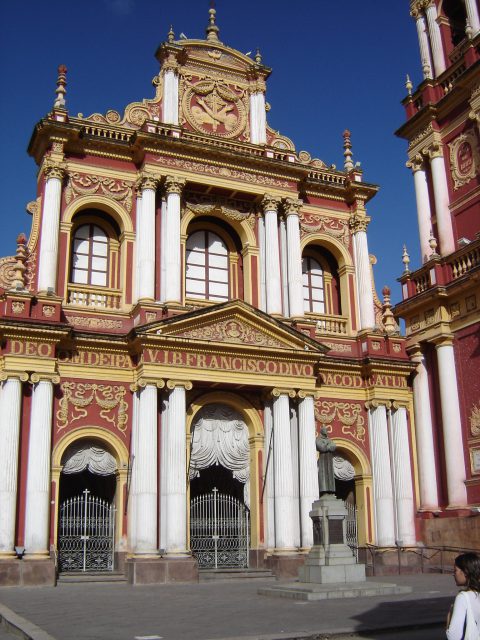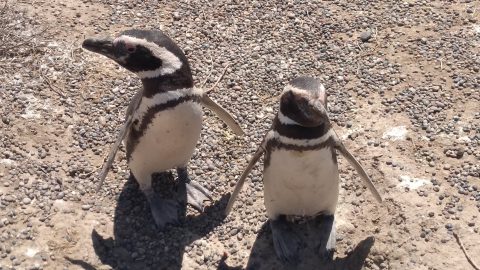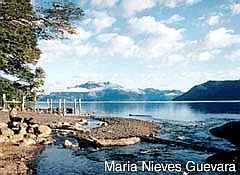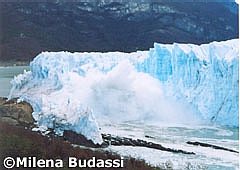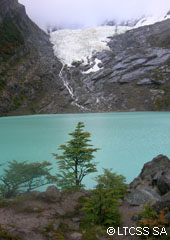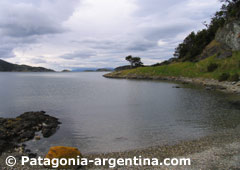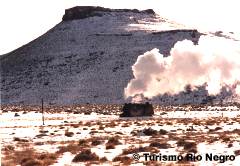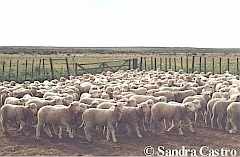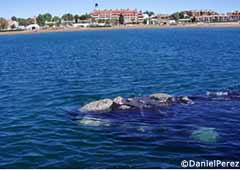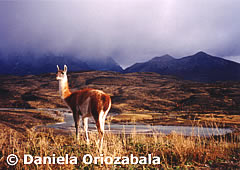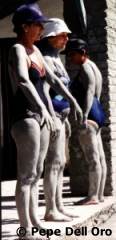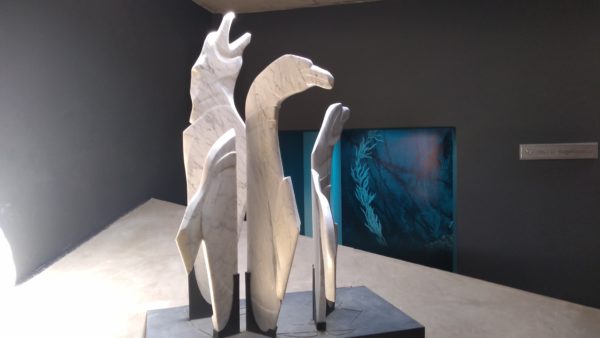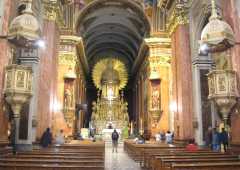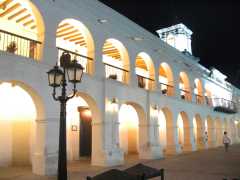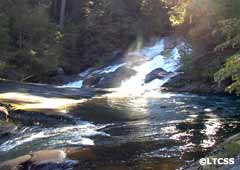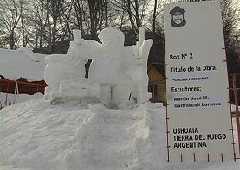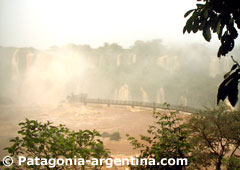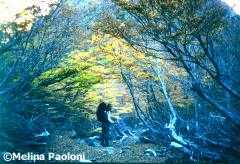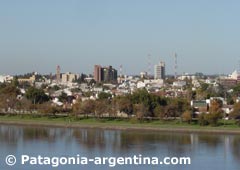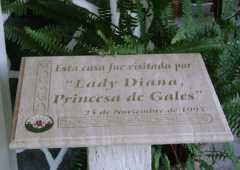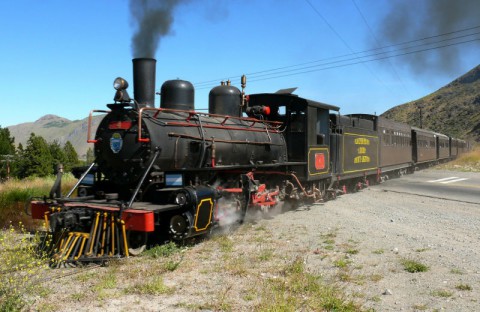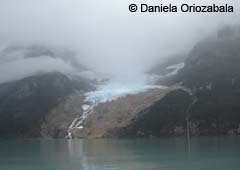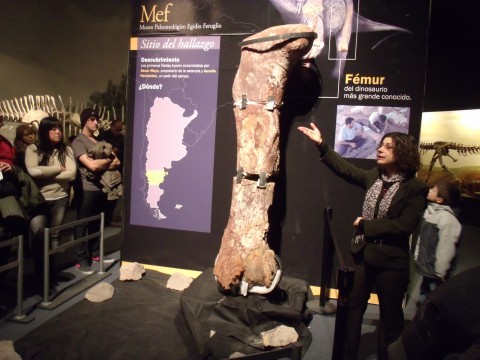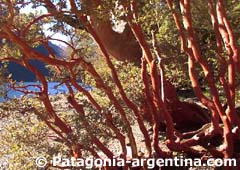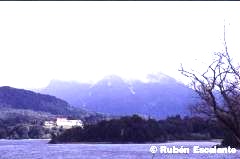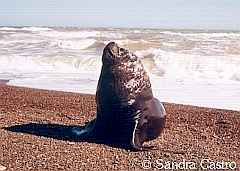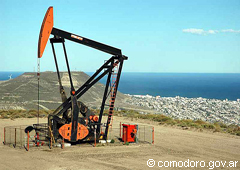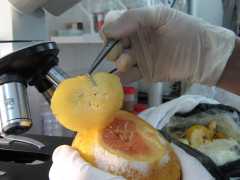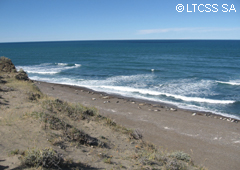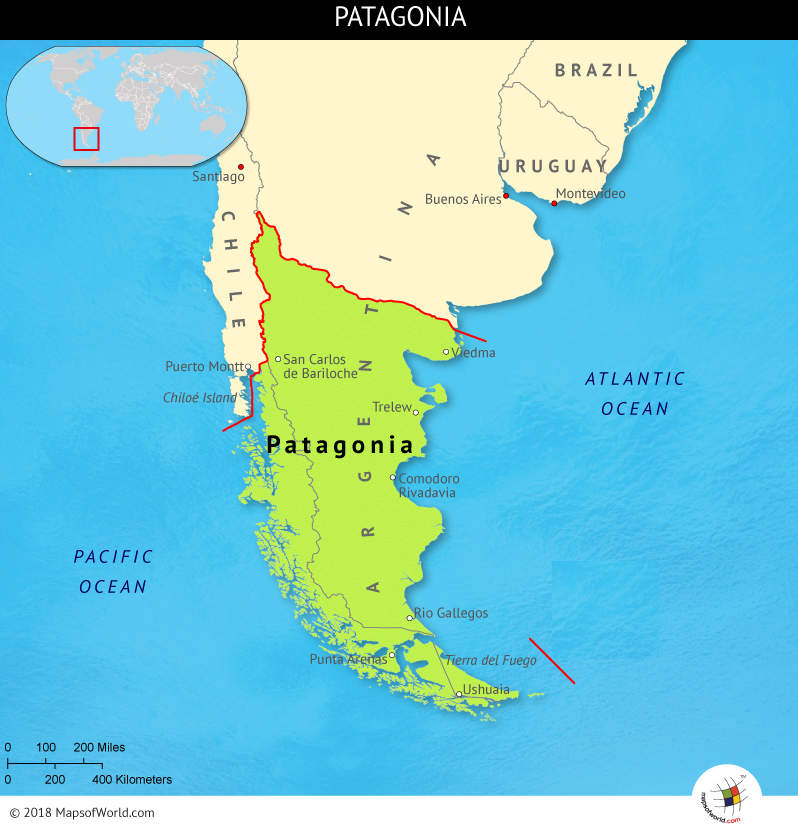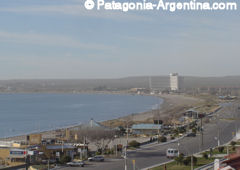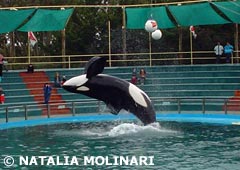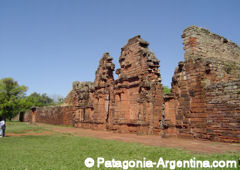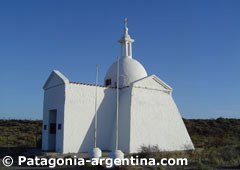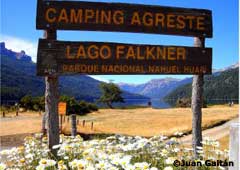The Argentine Northwest region has a rich history: native aborigins, Inca domination, Spanish conquest, each stage was leaving its mark. Here we summarize the most important moments.
Learn more
Although the jewel of Iguazú are the waterfalls, the park is also the home of the most diverse eco-system in Argentina. This sub-tropical rain forest is found in southern Brazil, eastern Paraguay and the northeast of Argentina. Today, due to…
The Tren Ecológico de la Selva (Rainforest Ecological Train) is one of the latest acquisitions of Iguazú National Park It makes visits to the Waterfalls more dynamic and protects the environment through a transport system of low impact on nature. The picturesque gas train, launched in…
Due to their slow motion, and the fact that they float when they die, these cetaceans have suffered the worst pressure during the commercial exploitation that took place between the 17 th and the 20 th centuries. The International Convention…
Orca Project is a program of observation and study of killer whales (Orcas) behaviour in their natural state. It was begun in Puerto Madryn, Patagonia Argentina, in 1975. Among other activities, this project has identified, named and coded each Orca that it…
The name of San Julián was given by Ferdinand Magellan when he reached this bay on March 31st, 1520. On the following day, Palm Sunday, there was the first mass on Argentinian territory, said fact is remembered by a monument…
Patagonia allows you to practice scuba diving in the waters of the Atlantic, in the Beagle Channel, the heart of the "End of the world", or in the blue depths of Nahuel Huapi, in the region of the Andean lakes.…
In order to preserve the sub-tropical rain forest that surrounds the waterfalls and the waterfalls themselves, two national parks were created: Iguazú National Park, in Argentina and Iguaçu Nacional Park in Brazil. The Argentine park, which is in the north of Misiones Province, was created on the…
A group of German researchers has closely studied the evolution of a very important colony of burrowing parrots at the El Cóndor beach, near Viedma, and discovered that its number is dramatically decreasing. One of the reasons is that local…
Describing the marvel... Learn how they originated, which and where the most important falls are, plus all the essential information to know this Wonder of the World. The Iguazú River is born in Brazil, in the mountain Serra do Mar, in Paraná. It flows gently…
Southern Right Whales and Commerson's dolphins share the habitat in the area of Valdés Peninsula. Know them in detail and enjoy your visit to this natural sanctuary. The Southern Whale Whales are mammals perfectly adapted to sea life. They…
Next to Lago Puelo National Park, you can find this beautiful Park, that comprises 263,000 hectares in western Chubut province, over the front-line with Chile. It was created in 1937 to protect the "lahuán" or larch, typical and massive tree of…
The Glaciers National Park, created in 1937, is the kingdom of continental ices and the Glaciers. It comprises 2320 square miles in the southwestern part of Santa Cruz Province. In the imposing heart of Southern Patagonia, where the wind whispers…
Neuquén's soil is rich in diversity. One can explore it in search of millenary fossils, cultivate it to obtain tasty fruits or take advantage of it to produce an exquisite wine. As a hybrid of these three gifts is born,…
Viedma and Carmen de Patagones / Las Grutas / San Antonio Oeste / Puerto Madryn and Valdes Peninsula / Puerto Pirámides / Sierra Grande / Trelew / The Petrified Woods / Puerto San Julián / Caleta Olivia / Comodoro Rivadavia…
These Southern whales have been in danger of extinction at a time, and nowadays have come out of this situation after the hard work of several organizations. The number has increased, even though it is considered a vulnerable species and requires special…
When people visit El Calafate and the Perito Moreno Glacier they often aren’t conscious that they are walking on a land that carries with it a terrible social and political history that was one of the worst moments for Argentina. …
Climate change is the potentiation of weather phenomena. The most famous one is global warming, which consists in the steady rise of the Earth’s atmosphere and ocean temperatures, as a result of the greenhouse effect. This is generated as certain gases in the…
Iguazu Port was born about 1609, when the first Jesuit missionaries were established, which remained in operation for over a century and a half. At the end of the 19 th. century the first “tourists” visited the falls. One of them was…
It is the largest of the National Parks in the area, covering 705,000 hectares, and also the first one. It was created in 1934, after the land donation made in 1903 by Perito Francisco P. Moreno. It shelters an ecological…
A first hand beautiful trekking experience in Mount Fitz Roy I had been planning the trip to El Chaltén since I can remember and the ultimate goal was to be as close to the marvellous Mt. Fitz Roy as possible. The beginning…
The story we want to tell you today is that of one of the most spectacular shipwrecks in the waters of the End of the World. The Monte Cervantes was a cruise that made the route Buenos Aires / Puerto…
Iguazu Falls in Argentina, were finally honored as one of the New Seven Natural Wonders of the World, at a party hosted within Iguazu National Park, with the impressive "Devil's Throat " as the background. The festivities began with fireworks…
It is a toxic illness that is also called Paralyzed Intoxication by seafood that takes place when ingesting seafood that has eaten marine plankton which produces paralyzing poison. It is not any virus, bacteria or fungus, it is not an infection.…
Route 40 runs alongside the Andes from la Puna until reaching the Glaciers of the South. It is mythical for many reasons. For the solitary stretches it crosses. For the peaks of the Andes that guard the route like centennials.…
Traveling to Argentina has become a trend among many tourists in the world and today is, more than ever, an excellent option for your next vacation. A properly designed tour of Argentina allows travelers to experience a variety of landscapes…
In Salta three different environments can be easily distinguished, being very diverse, originated by the progressive altitude increase in East-West direction. In other words, each and every one of these regions can be seen as a step in ascent from…
Coming to The Glaciarium is much more than a simple visit to a Museum. The ultra modern Ice Museum in El Calafate is a real experience for all senses. Why should The Glaciarium be included in every trip to El Calafate?…
In order to describe the Patagonia flora it is necessary to distinguish the different regions within it. The part of the northern littoral containing the coast region in Rio Negro and Chubut is a transition zone between the Chaco forest and Patagonia…
Lighthouses are an emblem of sailors and Patagonia, discovered, respected and even feared by seamen, conserves many of these artifacts. The word lighthouse ("faro" in Spanish) comes from Pharos, the name of an island located in front of Alexandria's port…
Find out in these articles more additional information to better enjoy your trip to Cafayate and northern Argentina. Facts, customs, stories.
The Misiones Jungle, which surrounds the Falls, is one of the most bio-diverse areas of the world. Know the species that live there and which ones are in danger. The main characteristic of the flora is that there are multiple…
Cachi is one of those towns in northern Argentina that are made of history. Much of its charm lies in knowing the customs of itsinhabitants, legends and anecdotes that populate the streets.These notes tell you about some of them.
What to wear In the mountains climate changes are usually abrupt. The essential thing is to wear warm underwear and then a jacket, pants and waterproof over-pants. You also need a hat to protect the ears and gloves and wool…
This is the conclusion reached by the experts at National Geographic. After conducting a survey about the best whale watching places in the world to spot these huge cetaceans, Argentina charted at the top according to NatGeo. The list also…
The attentive visitor to Misiones' forest will have the opportunity to observe many distinctive creatures in their natural habitat. Many mammals live only in defined areas of the jungle: they are tree dwellers and live in communities. One of the…
At the southern end of the Province of Buenos Aires is Carmen de Patagones, unknown to most tourists. However much of Patagonian history was written in this region. Facing Viedma, separated by the Negro River, it is another key point…
Salta is the historical capital of the North of Argentina. It shares with the rest of the Andean countries a powerful aboriginal and Spanish fusion in arts, religion and culture. Know what their best exponents are.
The Magellan Penguins are migratory sea birds that arrive during Spring at the Patagonian coasts During the cold months they travel more than 3000 Km. up to the Brazilian coasts in search of warmer waters. They build their nests near…
Please bear in mind that our summer starts December 21st. Area North Atlantic South Atlantic Tierra del Fuego The Glaciers Northern Lakes Negro river Upper Valley and Neuquén Rio Negro Province (south) Features In this zone western winds predominate and,…
For those of us who really enjoy photography, touring Argentina becomes fascinating since, besides enjoying all the unique landscapes its geography offers, at the moment of taking a picture we can bring home a bit of its charm. One typical…
A natural phenomenon that has already become one of Patagonia's most sought after, yet unpredictable experience: Perito Moreno glacier's rupture. What is the process like ? Lake Argentino, in which Perito Moreno Glacier is set, has many branches. Two of them, Sur and…
Hikes near Mt. Fitz Roy: a cheat sheet with trails according to time available and the different levels of difficulty For one day or less Fitz Roy Lookout Point (Mirador del Cerro Fitz Roy): 1:30 one way, with a climb…
Located in southwestern Tierra del Fuego province, over the borderline with Chile, this National Park is the southernmost example of the Andean - Patagonian forest. It was created in 1960 and has a surface of 63.000 hectares. In this area…
The main characteristics of the Patagonian climate are: short falls and springs, and long winters. Great thermal amplitude between summer and winter, as well as a substantial temperature difference between day and night. Please click here in order to access a comprehensive…
The Old Patagonian Express Railway adds yet another attraction to its tourist circuit. On one hot January afternoon, the passengers who had boarded the train looked out their windows and saw a group of men on horseback, with their faces masked…
The meat of the Patagonian lamb is a new star of international cuisine. There are many reasons for why this has occurred. On one hand, it offers the best price on the international market due to the current exchange rate to…
Vida Silvestre Foundation (a partner of WWF) introduces the Whales in the Bay Project, created to prevent whales and vessels from colliding in the Nueva Bay located in the Valdés peninsula. By the end of 1999, Valdés Peninsulawas listed as World Heritage Site by UNESCO,…
Patagonia has got a rich and characteristic wildlife There are many animals and a noticeable diversity of species. Among the great vertebrates is the Southern Right Whale, which can be watched from the shore, and also Orcas, dolphins and the…
Patagonia, promises and delivers unforgettable adventures to its visitors and each destination offers unique experiences that require meticulous preparation. This article aims to be your packing companion, ensuring that you arrive in Patagonia prepared for everything this land of contrasts…
Dr Hugo Torres tells us about mud therapy as a treatment for rheumatic and skin diseases. It is developed in the wonderful Copahue Hot Springs, in the north of the Province of Neuquén, a location that also offers many tourism…
The Penguin Interpretation Center of Punta Tombo, nestled in the wildlife reserve, was built without altering either nature or landscape. To get to Punta Tombo, the largest continental reserve of Magellanic penguins it is necessary to travel about 120 km.…
On aggregate, one of the attractive features comprised by the region is the possibility of establishing direct contact with traditions and millenary customs, many of them are the result of the fusion between the local culture with the one from…
Did you know that the whales don't form couples but mating groups? Why are the whales the species with the biggest testicles in the animal kingdom? Why can it be said that whales are giant water filtering machines? What are…
Iguazu Falls and the Misiones rainforest are full of stories, trivia and lots of things to learn about. Uncover all the secrets reading these articles.
The name of ‘Salta’ precedes by far the Spaniard colonization. And the history of how it came to be imposed is interesting. But it was not the name imposed by its founder. Hernando de Lerma, the conqueror to whom these dominions were granted, gave…
Ever since humans became sedentary, the land and the water have been the main causes of conflict. The bloodiest wars have been fought over a bigger or smaller share of land. Life and Water seem to pair up as synonyms…
Each winter at Ushuaia, the southernmost city in the world, a snow sculptures contest takes place. This is a form of art that has got many fans around the world, particularly in Canada, United States and Europe. Also called "ephemeral…
The waterfalls were discovered in 1541 by Adelantado Alvar Núñez Cabeza de Vaca. Alvar Núñez was a different type of conqueror. It is enough to say that the book he wrote about his experiences is called Shipwrecked . . . although he set course for…
El Calafate is the Capital of the Glaciers. But there is more to be learnt: stories, legends, news... In these articles you will find additional information in order to make the most of your stay. Read them and start enjoying!
Every season has its own particular charm and Fall is an outbreak of colors. Furthermore when it's about venturing a little into the heart of the Patagonic Andes. Let B.S. Melina Paoloni lead you through this Bariloche path.... This hiking…
They are two symbols of civilization that have been founded at the same time, just like the lighthouse and the mythical library of Alexandria. They are two traces of past knowledge, which continue working for future wisdom. This year was…
Salta is a land of stories, legends and secrets. We invite you to obtain further information to enjoy your trip even more.
Very close to Puerto Madryn and the whales there is an exotic and special corner of Patagonia: Gaiman, land of the Welsh, full of traditions, old and new, as those arising out from the visit of Lady Di, Princess of Wales. This article will inform you of…
Traveling by Train is romantic. It makes us imagine that we are time travelers. To enter that world of rolling wagons, dampened noises and smooth wobble is an unforgettable experience. If we add the fact that through the windows the…
Valcheta and Somuncura Tableland / Neuquén (Capital) / Choele Choel / Cipolletti / General Roca / Villa Regina / Sarmiento and the Petrified Wood / Ingeniero Jacobacci / Gobernador Gregores Staggered plateaus with groups of low, flat and isolated hills are…
The receding Viedma Glacier and the loosening of a 415 square km (160 sq mi) iceberg from Antarctica have reactivated worldwide alarm on climate change effects and brought to the table the issue of man’s moral responsibility for this process. Countries' energetic and industrial…
Bariloche is one of the most important tourist destinations of Argentina. There is much to know, beyond the traditional tours. In these articles you will find additional information in order to make the most of your stay. Read them and start enjoying!
Remains of a dinosaur were found in Chubut territory. It is the biggest in the world. Researchers at the Museo Egidio Feruglio (MEF ), Trelew, found the nearly complete remains of the largest dinosaur skeleton found so far in the World with…
Summer is over, the snow is not coming yet, and it is a time of delights in Bariloche. Do not miss it! Follow our advice and you will see that you will not regret it. Autumn is the time of…
The Curanto Tradition When we arrived in Colonia Suiza, we found a history of movements, changes, of belonging and not belonging, with the history of a man searching for a place to settle and build his dreams. It is as…
From the pinniped (sea mammals with fins and feet), the sea lions are the only ones who also have ears. The aspect of this species varies a lot according to age and sex. Adult males have very long necks covered with a thick…
The basin of the San Jorge Gulf has become a surge of financial opportunities. Oil has become the Holy Grail of operator companies and the crowds of contractors ready to make a fortune with oil wells. In addition, a wide…
The Patagonian Protected Region has a different zoo and phytosanitary status than the rest of Argentina, which allows the commercialization of its production to the most demanding international markets. Patagonia is the only region of the Argentina internationally recognized as…
The orcas’ population in the Argentine Atlantic Patagonia consists of only 32 specimens; however, they are not of little importance, as they have arisen scientific interest due to their heterodox hunting method - intentional stranding. These cetaceans intentionally strand on…
Map of Patagonia Argentina's share of Patagonia • It is mountains. The Patagonian Andes Region extend to the west like a huge wall acting as a borderline with Chile. With landscapes of lakes and pines, it has snow during winter and…
There always is a pretext in order to submerge ourselves into the tradition of the welsh colonies in the south of Argentina, and the discovery of the remains of a 1850 ship is a more than sufficient reason to dedicate…
At Marine World Theme Park (San Clemente, Argentina) survives a young specimen of Orca, the only one in captivity in South America. Its tale varies greatly depending on who tells it. Draw your own conclusions. Kshamenk is a strong young…
History remains that are still found in the south of Misiones Province. The architecture invites us to imagine the lives and poverty of inhabitants dwelling in a territory then divided. Our proposal is to travel along the Jesuit Missions Route…
Exploring the Valdés Peninsula is a unique experience for the senses. A large tongue of land, profound blue waters on both sides, marine birds in the air and a lone white church, next to the beach and pale as a…
Whales, penguins, orcas, dolphins and Welsh customs are part of what makes Puerto Madryn unique. Learn all the secrets in these articles.
Ushuaia is the capital city of Tierra del Fuego; the mecca for all those souls wishing to reach the End of the World. Know the details of its history that includes sailors, a bit crazy pioneers, plenty of shipwrecks, hidden…
